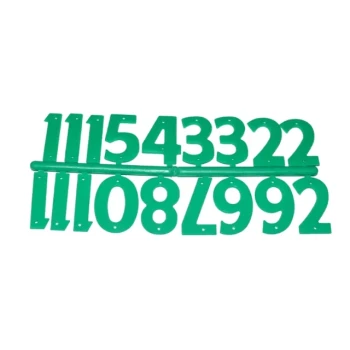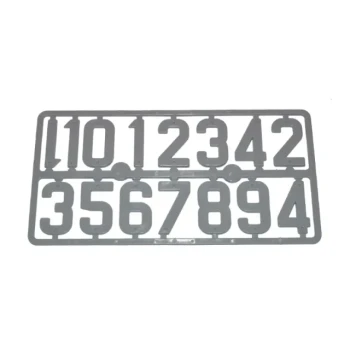At its core, the top bar hive simplifies honey harvesting by eliminating the need for expensive, specialized extraction equipment. Instead of a complex process requiring a centrifuge, the harvest can be completed with simple kitchen utensils. This approach, known as the "crush and strain" method, makes beekeeping significantly more accessible for beginners and hobbyists.
The central advantage of a top bar hive is its low-tech approach to harvesting. The design allows a beekeeper to remove individual combs, cut them from the bar, and separate the honey from the wax using basic tools, sidestepping the cost and complexity of conventional extraction.

The "Crush and Strain" Method Explained
The simplicity of a top bar hive harvest lies in its straightforward, manual process. It breaks down into a few manageable steps that don't require heavy lifting or machinery.
The Only Tools You Need
The entire process relies on items likely already in your kitchen. You will need a long kitchen knife, a large bowl or food-grade bucket, a potato masher or large spoon, and a strainer or cheesecloth.
Step 1: Remove a Single Comb
Unlike a traditional Langstroth hive where you must lift heavy boxes (supers), the top bar hive allows for a piecemeal harvest. You simply open the lid and select a single, heavy bar full of capped honey, causing minimal disturbance to the rest of the colony.
Step 2: Cut the Comb from the Bar
With the bar held over your bowl, you use the kitchen knife to slice the honeycomb directly off the wooden top bar. The entire comb falls into the container below.
Step 3: Crush and Strain the Honey
Once the comb is in the bowl, you use a potato masher or spoon to break it up. This mashing action opens the wax honey cells, releasing the honey. The resulting mixture of honey and wax is then poured through a cheesecloth or a simple strainer, allowing pure honey to filter into a clean container below.
Why This is Simpler than Conventional Methods
The top bar hive was designed with the hobbyist in mind. Its harvesting process reflects a philosophy of simplicity and minimal investment compared to commercial-style beekeeping.
No Expensive Extractor Needed
The most significant simplification is the complete avoidance of a centrifugal honey extractor. These machines, standard for Langstroth hives, are expensive, bulky, and require a dedicated space for their messy operation.
A Less Disruptive Harvest
Removing and processing a single bar at a time is far less stressful for the bee colony. A conventional harvest often involves removing multiple heavy boxes, transporting them, and disrupting tens of thousands of bees at once.
Harvesting on Your Schedule
The bar-by-bar approach allows you to harvest as much or as little honey as you want, when you want it. You can take a single comb for your pantry without committing to a full-day, labor-intensive extraction event.
Understanding the Trade-offs
This simplicity does not come without compromises. The top bar hive's method is fundamentally different from a process designed for maximizing production.
Lower Overall Honey Yield
This is the most critical trade-off. In a conventional hive, the empty honeycombs are returned to the bees after extraction. Because the bees don't have to spend time and energy rebuilding wax comb from scratch, they can produce much more honey. In a top bar hive, the comb is destroyed during the harvest, forcing the bees to rebuild it every season.
The Comb is Not Reused
The crush and strain method completely sacrifices the comb. This means the colony must dedicate significant resources to producing wax, which directly reduces the amount of surplus honey they can store.
A Different Kind of Mess
While you avoid the large-scale sticky mess of an extractor, the crush and strain method is a very hands-on and sticky process. It is simple, but it is not necessarily "cleaner."
The Valuable Byproduct: Beeswax
The primary "disadvantage" of the top bar hive's harvest method—the destruction of the comb—is also the source of a major benefit.
A Significant Wax Harvest
Because you are processing the entire comb, a top bar hive yields a significant quantity of clean, high-quality beeswax. This is a valuable byproduct that can be used for crafting candles, balms, wood polish, and other products.
Purity of the Wax
The constant renewal of comb means the wax you harvest is always fresh and free from the potential accumulation of pesticides or chemicals that can build up in comb that is reused for many years.
Making the Right Choice for Your Goal
The "best" hive depends entirely on what you want to achieve as a beekeeper. The harvesting method is a defining factor in that decision.
- If your primary focus is simplicity and low startup cost: The top bar hive is an excellent choice, as its crush and strain method completely avoids the need for an expensive extractor.
- If your primary focus is maximizing honey production: A frame-based hive like the Langstroth is superior, as reusing the drawn comb allows the bees to focus their energy entirely on making honey.
- If your primary focus is a natural, low-intervention approach: The top bar hive's gentle, bar-by-bar harvesting philosophy aligns perfectly with a more treatment-free and bee-centric style of beekeeping.
Ultimately, the top bar hive's design demystifies the harvest, transforming it from an industrial process into a simple kitchen activity.
Summary Table:
| Aspect | Top Bar Hive (Crush & Strain) | Conventional Hive (Extractor) |
|---|---|---|
| Equipment Needed | Basic kitchen utensils (knife, bowl, strainer) | Centrifugal honey extractor, uncapping tools |
| Startup Cost | Very Low | High (due to extractor cost) |
| Process Complexity | Simple, hands-on | More complex, mechanical |
| Colony Disturbance | Minimal (harvest one bar at a time) | Significant (remove entire boxes) |
| Honey Yield | Lower (bees rebuild comb) | Higher (combs are reused) |
| Byproduct | Significant, pure beeswax harvest | Minimal wax byproduct |
Ready to Simplify Your Beekeeping Operation?
Whether you're a hobbyist exploring top bar hives or a commercial apiary optimizing for efficiency, HONESTBEE is your trusted partner. We supply high-quality, durable beekeeping supplies and equipment to commercial apiaries and beekeeping equipment distributors through our wholesale-focused operations.
We help you:
- Reduce startup costs with competitively priced, essential equipment.
- Scale your operation with reliable, commercial-grade solutions.
- Improve your harvest with tools designed for both simplicity and productivity.
Let's discuss your specific needs. Contact our expert team today to get a quote or learn more about our wholesale offerings.
Visual Guide

Related Products
- HONESTBEE Professional Hive Top Bee Feeder Feeding Solution
- HONESTBEE Professional Long Handled Hive Tool with Precision Cutting Blade
- Professional Hive Top Bee Feeder for Beekeeping
- Professional Large-Format Hive Number Set for Beekeeping
- Modern Flat-Mount Hive Number Set for Beekeeping
People Also Ask
- What safety features are included in top feeders? A Guide to Drowning Prevention and Hive Safety
- What are the advantages of hive top feeders? Maximize Feeding Efficiency for Your Apiary
- What is the best way to top feed bees? A Safe, High-Volume Feeding Solution for Your Apiary
- How do I keep bees from drowning in my top feeder? Ensure Safe Feeding for Your Hive
- How is the plywood floor fitted into the hive-top feeder? Ensure Longevity with a Floating Floor Design



















